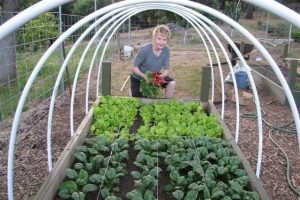Food preservation is becoming one of the fastest growing trends in the food world, partially due to the Slow Food movement. Their manifesto is good, clean, fair food for all and encourages the heritage of food, tradition and cultures. The idea is to have a strong connection of plate, planet, people and culture. As a result, people are becoming more interested in where food comes from and how to preserve it.
Canning, pickling, freezing, drying and dehydrating are all methods of food preservation. Many home gardeners will plant extras simply for the purpose of preserving them. I always love to visit friends and see their pantries full of beautiful jars of food they have “put up”. They are so proud of their hard work and beautiful product. Most feel that their products are superior to any they can purchase and, best of all, they know where it came from.
The initial investment of a canner and jars may put you back a few dollars. However, if you continue to preserve food, it will pay you back in more than dollars. The satisfaction of eating your canned, dried, frozen or pickled produce may encourage you to continue your pursuit.
Dorothy Smith, RD, UCCE Central Sierra Nutrition and Family Advisor, and Sue Mosbacher, Master Food Preserver program coordinator in El Dorado/Calaveras/Amador Counties, presented basic canning information at our August Master Gardener meeting. Both mentioned certain important points to consider when canning that, if ignored, could result in food poisoning and perhaps death.
First, make sure all surfaces and equipment are sanitized. Wash your hands well and rinse your produce with water. Only use current recipes. Updated research and latest testing have improved many recipes. Your chances of contracting a food-borne illness from food that has not been properly canned are higher if that food is not canned using current USDA-tested recommendations. Ball home food preservation recipe books and the National Center for Home Food Preservation also provide safe guidelines to follow. Ball is at http://www.freshpreserving.com/home.aspx and National Center for Home Food Preservation is at http://nchfp.uga.edu/.
Pickling is a form of preserving that is easy for beginners. You don’t need a pressure canner to seal the jars. Peppers, beets, cucumbers, green beans, radishes and all sorts of other vegetables and fruits can be pickled.
Freezing is an easy method of food storage. Berries can be placed in a single layer on a cookie sheet and placed in the freezer. After they are frozen, transfer them to freezer bags and store them in the freezer. Green beans and apple slices can be frozen the same way and stored in individual bags for holiday dinners. Stone fruit can be dipped in Fruit Fresh to keep it from browning and stored in a similar fashion. Note: if your area is subject to power outages, keep a frozen bottle of water in the freezer to help you assess when foods start to thaw.
If you live in an area with a high amount of moisture in the air, or in cooler months in the Mother Lode, your food product needs to be protected from the moist air. In this case it is best to use a commercial dehydrator. Typically, we do not have to worry about excess moisture in summers in Tuolumne County, so use that solar energy to your benefit by letting the sun dry produce, such as tomatoes.
Dehydrating can be done using a dehydrator that you make or purchase. Make sure your food is not showing any signs of moisture. If the food is too moist, you will most likely end up with a contaminated product from the excess moisture. On the other hand, you do not want your food too dry or it will become too hard and difficult to eat. Follow the guidelines on the National Center for Home Food Preservation website for drying to ensure you get the best results and a safe product.
Use the method of food preservation that is best suited to your time, energy level and patience. Be well informed on the best method for your produce and always read the instructions completely before beginning your project. The National Center for Home Food Preservation website has a free online self-paced course that covers multiple canning topics. The best results come from good preparation methods and a thorough understanding of the process before you begin. You don’t have to stop at fruit and vegetables. Meats, fish and poultry can be canned or dehydrated. You can make your own mustards, pesto and other accompaniments to your meals. The reward is the end product that you have created.
Dede Moreno is a recent graduate of the Master Gardener training class.


